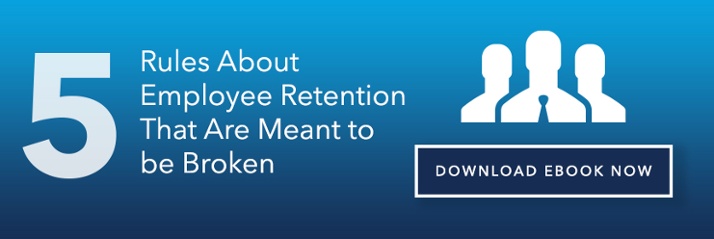.jpg)
Hiring someone is easy.
Hiring someone who is good at their job is not so easy.
A typical job post receives 250 resumes, and some may get a lot more. Out of those resumes, only a few will be truly qualified, and finding the best candidate for your job can feel like an adventurous quest with an uncertain end.
The worst part is that the very best candidates aren't going to be amongst those 250 or so applicants. When hiring, you often face high quantity, but low quality.
The best way to find the very top candidates is to attract the more than 73% of job seekers who are passively looking for a job.
What is a Passive Job Candidate?
A passive job candidate already has a job that they are reasonably happy with, but are open to changing jobs if they happen to come across a better offer. The truth is that most employees have something which will make them jump ship.
However, these candidates generally do not apply to your job posting, although they may have resumes posted on various job sites. They show interest only if you come up on the radar through some other means.
What Are the Advantages of Passive Candidates?
There are a few advantages that passive candidates have. This is not to say that there aren't good candidates who are actively searching for work, but passive candidates have the following traits:
They are Likely of Higher Quality
While many active job seekers are unemployed or looking through no fault of their own, others may have been fired from a previous position. Passive candidates, by definition, have not been let go for cause. This means that they tend, in general, to be higher quality. Of course, it's always possible that the passive candidate has been going through the motions, but they have been proven and vetted in general.
Less Competition
When a top-quality candidate goes on the market, they are sought after. The candidate who applies to your job almost certainly also applied to a number of other positions. You may end up in a bidding war with your competition, resulting in you offering more than you can truly afford or losing out to another company.
When you attract a passive candidate they are likely not applying to other jobs, and you only have to compete with their current position.
Better Skills Match
It can be hard to determine whether a candidate has the specific skills you need. In some cases, candidates are dishonest and claim abilities they don't possess. More commonly, you can't be entirely sure what a candidate has done in the past.
With passive candidates, you can look at the position description of the job they are in and get a much better idea of how close a match their skills and talents are.
So, how do you get these high-quality passive candidates?
How to Attract Passive Candidates
Employee Referral Program
One of the best ways to find passive candidates is to have an employee referral program. If you offer a good workplace with a strong company culture, your employees will be glad to help you find candidates for an open position.
You can trust that anyone they recommend is likely to be a good fit for your office and business. They may even need less onboarding when hired. Employee-referred new hires tend to be better performers and stay longer, and the rewards you might provide are highly cost-effective. Referred candidates can even improve the productivity of those referring them.
Build Relationships
The second key aspect is relationship building. Networking does not always have to have a specific goal. If you find an ideal candidate, you can reach out to them and talk about related topics. If they then decide they do want to switch jobs then they might be paying attention to any postings you make.
This can be done on social media. LinkedIn is a great channel for this, but don't limit yourself.
Create Content
Show off what a great place you are to work for with videos that portray your company culture. You can also write blog posts that are helpful and answer questions, but also show what your company is like. These blog posts do double duty: many consumers nowadays want to know that the companies they buy from treat their employees well. You can spend a bit of time showcasing how your office works and who your employees are.
Strengthen Employer Brand
Many companies don't care about their employer brand and focus primarily on brand marketing to consumers. Marketing to prospective employees, however, is just as important. You need to consciously develop an employment brand by ensuring that you have a solid mission, values, and culture. Conduct internal and external research so you know what your employees want from your organization.
Not only does a strong employer brand help you attract passive candidates you don't know, but it improves retention and employee satisfaction. That then increases referrals.
Access Competitive Benefits
You need to make sure you offer competitive benefits. This can be cost-prohibitive for smaller companies, but you have little chance of attracting top talent without good benefits. The best way around this is to work with an outsourced HR partner who can use economies of scale to help you get better benefits for a lower price.
A focus on attracting passive candidates is a great way to improve your talent pool. It can be cost-effective and less tedious than trying to find the best candidate from hundreds of prospects. Passive candidates also tend to be of higher quality and will fit into and strengthen your company culture and employer brand if you do it right.
.jpg)
Jason Randall
Jason L. Randall is the CEO of The Questco Companies. He regularly speaks on topics related to strategy, growth, and organizational performance.




